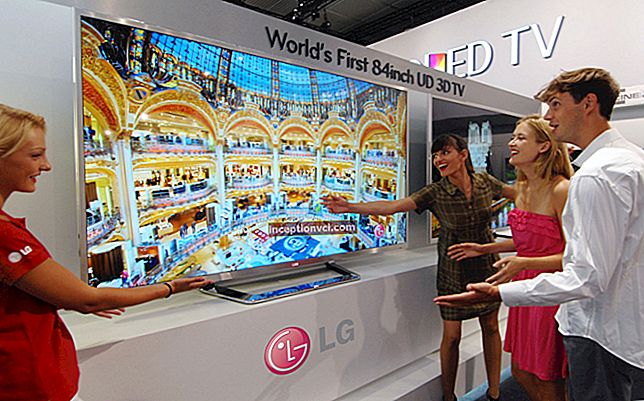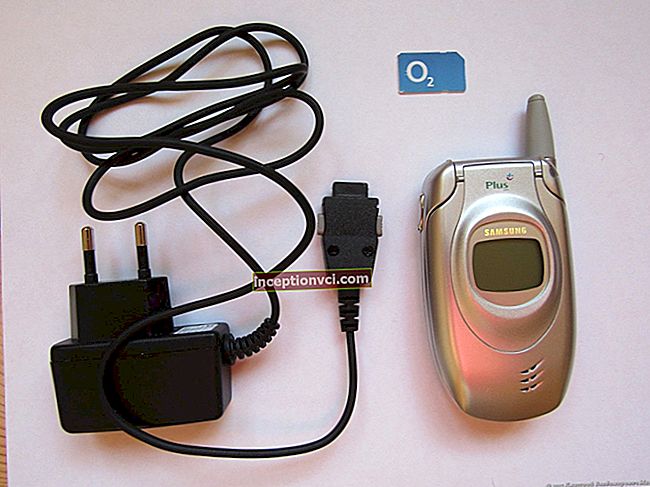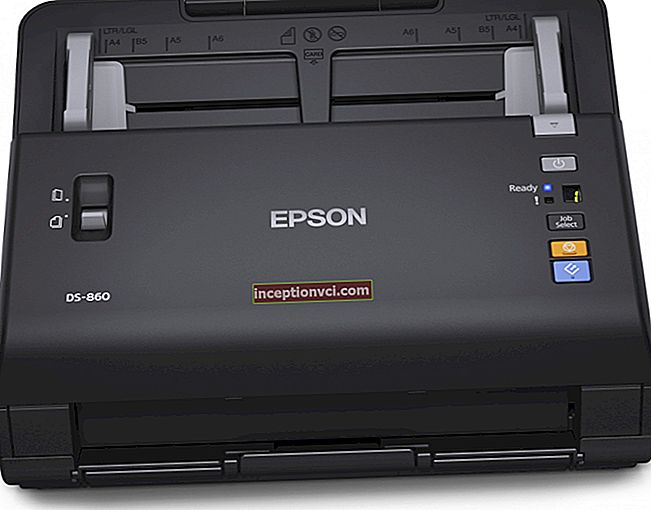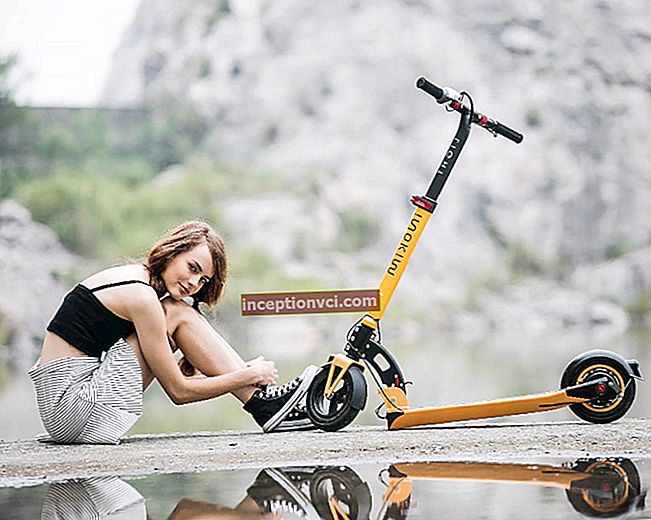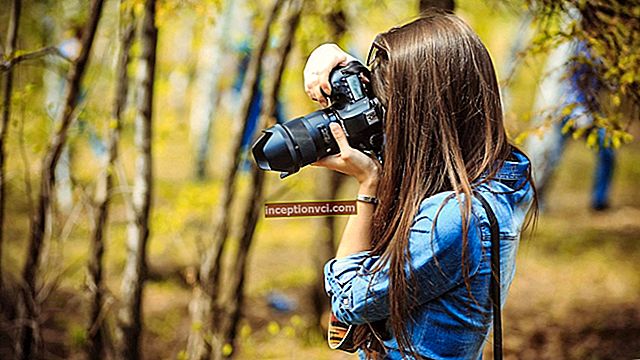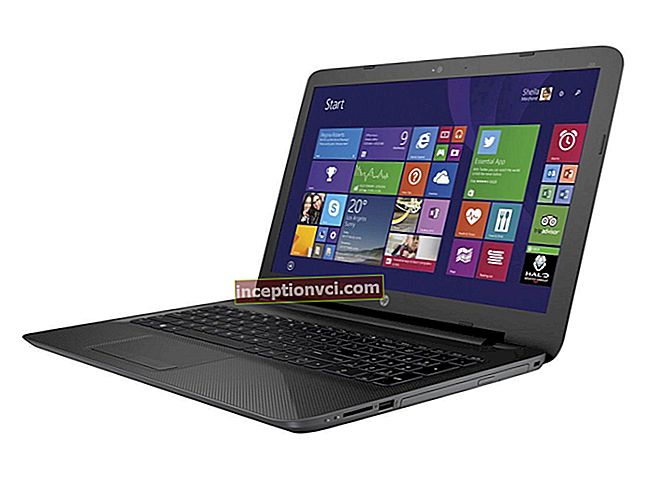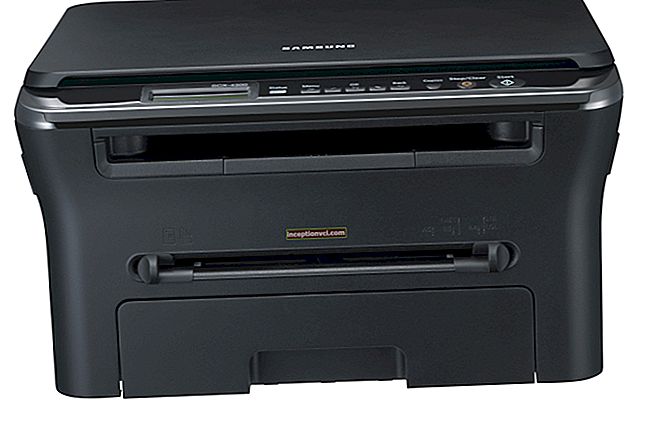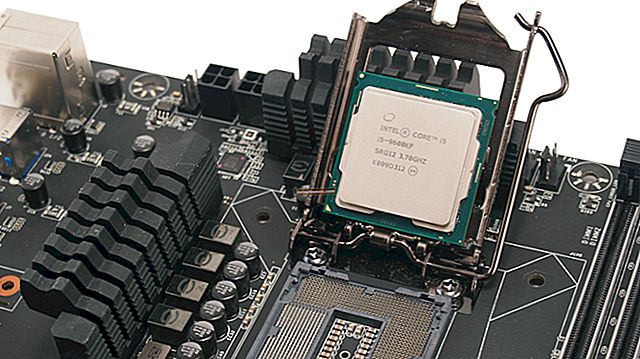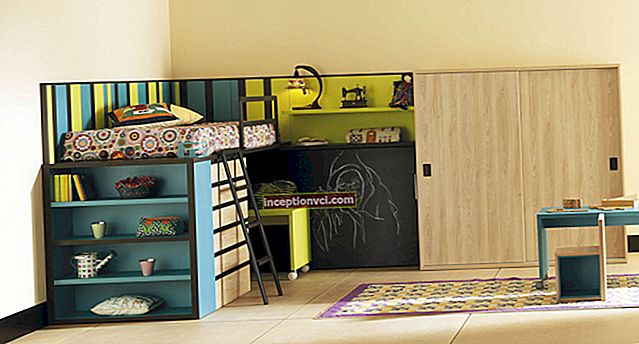Overview Nikon D700
The development of the new Nikon D700 camera may have been one of the company's biggest secrets, and it was an equally anticipated intrigue that can be compared to the release of the D3 and D300 cameras. In fact, the D3 has shrunk down to fit in a body about the same size as the D300, so we get the brand new D700, which is Nikon's first compact professional SLR camera and will compete with its recently released “colleagues” in its segment on the market.

The side of the D700 visible to the naked eye is very similar to the D3, both cameras have a 12.1MP full-size FX-matrix (36x23.9 mm), as well as an identical photo processing system, so it's fair to assume that the images output from the cameras are completely comparable in quality. ... The main differences (not counting the physical size of the cameras) are: the number of guaranteed shutter cycles: 150 thousand for the D700, and 300 thousand for the D3), slightly different viewfinder prisms (95% frame coverage) and a slower continuous shooting speed compared to D3. The D700 parts with the rear LCD information panel (there is simply no room for it), and also leaves behind only one CF card slot. But to soften the shock a bit and not upset you, it's worth mentioning some nice little things: this camera has several additional advantages, such as a sensor with a self-cleaning function and a built-in flash.
And after all of the above, it would be worth considering in more detail some ...
Nikon D700 Key Benefits
- 12.1MP full frame sensor
- Matrix cleaning function (vibration)
- ISO 200-6400 (upscaled to ISO 25600 and forced down to ISO 100)
- Supports DX lenses
- 14-bit A / D conversion
- Superb camera turn-on speed and shutter lag, identical to the D3
- Kevlar / CFRP Composite Valve
- AF sensor Multi-CAM3500FX (51 points, 15 points cross type, wider vertical frame coverage)
- Color-tracking autofocus (drawing information from a 1005-pixel sensor)
- Viewfinder: 95% frame coverage, 0.72x magnification
- AF Calibration (Fine Tuning)
- Scene Recognition System (using autofocus sensor)
- Presets for adjusting the resulting images
- Continuous shooting: 5 fps with continuous focus tracking
- MB-D10 battery: accessory (same as D300), boosts shooting speed up to 8fps
- One CF card slot
- 3.0 "LCD monitor with 922K pixels
- Live View
- Virtual horizon (essentially a "level" image that resembles a display in front of an airplane pilot)
- HDMI HD video output
- High-strength case, reliable buttons, protected from dust and moisture in the case
- Improved display of information on the home screen
Note: Items that differ from D3 specifications are marked with "bold" type.
Nikon D700 vs D3: Key Differences
While the D3 and D700 are essentially the same camera in different form factors (although the D700 is much more similar to the D300 in design and camera control), there are a few important differences:


- 1.Smaller, lightweight body (D700 is about 34 mm shorter, 13 mm narrower and 10 mm less. Weight (without battery: D3-1240 grams, D700-995 grams)
- 2. Built-in iTTL Flash (Trace Number 17 @ ISO 200)
- 3. There is no rear information panel (information about shooting is transferred to the main LCD)
- 4.The D700 does not have the optional 5: 4 pixel aspect ratio of the photo, unlike the D3
- 5. Viewfinder: 95% frame coverage, 0.72x magnification (D3: 100% / 0.7x)
- 6. Slower shooting speed (5 / 8fps with MB-D10 battery)
- 7. Maximum 100 frames in continuous shooting mode
- 8. Less capacity battery (EN-EL3e)
- 9. Additional battery pack (MB-D10, identical to D300)
- 10. Menu-configurable additional camera control buttons
- 11. Live View can be assigned to the FUNC, AE-L or Preview buttons
- 12. It is possible to apply a virtual horizon in Live View mode
- 13. Various technology of manufacture of closures
- 14. Cleaning the matrix from dust (vibration)
- 15. One CF slot (D3 has 2 slots)
- sixteen.Camera control and menu interface are similar to D300
Below is a comparison table for our three cameras with their main parameters:
Nikon D300 |
Nikon D700 |
Nikon D3 | |
Dust extraction | • Self-cleaning matrix • Cleaning by reference image | • Self-cleaning matrix • Cleaning by reference image | Cleaning by reference image |
Matrix size | 23.6 x 5.8 mm | 36x23.9 mm | 36x23.9 mm |
Effective pixels | 12.3 million | 12.1 million | 12.1 million |
CROP factor | 1.5x | 1x | 1x |
Sensitivity range (boost) | (100), 200 - 3200, (6400) | (100), 200 - 6400, (25600) | (100), 200 - 6400, (25600) |
Shutter life | 150,000 operations | 150,000 operations | 300,000 operations |
Continuous shooting speed | 6.0 fps | 5.0 fps | 9.0 fps (11 fps DX mode) |
Buffer size | • 100 JPEG images • 17 RAW | • 100 JPEG images • 17 RAW | • 130 JPEG images • 17 RAW |
Built-in flash | • reclining • Ved. number 12 (ISO 100) | • reclining • Ved. number 12 (ISO 100) | – |
Memory card type | CF (UDMA) | CF (UDMA) | CF (UDMA) x 2 connectors |
Viewfinder | • 100% coverage • magnification 0.94x | • 95% coverage • magnification 0.72x | • 100% coverage • magnification 0.7 x |
Battery | 11.1 Wh | 11.1 Wh | 27.75 Wh |
Add. battery pack | MB-D10 | MB-D10 | Built in |
Dimensions (edit) | 147 x 114 x 74 mm | 147 x 123 x 77 mm | 160 x 157 x 88 mm |
Weight (without battery) | 825 g | 995 g | 1240 g |
Weight (with battery) | 903 g | 1075 g | 1420 g |

Well, I think we'll finish with the comparisons. It's time to talk more specifically about our D700 and list ...
Nikon D700 specifications
Body material | Magnesium alloy body |
The matrix | • 36x23.9 mm CMOS matrix • FX format • Array of RGB filters • 12.87 million p. In total • 12.1 million effective p.p. • Aspect ratio 3: 2 |
Graph. CPU | Nikon EXPEED |
A / D conversion | 14 bit |
Image sizes (FX format) | • 4256x2832 [L; 12.1 MP] • 3184x2120 [M; 6.8 MP] • 2128x1416 [S; 3.0 MP] |
Image sizes (DX format) | • 2784x1848 [L; 5.1 MP] • 2080x1384 [M; 2.9 MP] • 1392x920 [S; 1.3 MP]] |
File formats | • NEF (12-bit or 14-bit, compressed or compressed lossless RAW) • NEF + JPEG • TIFF • JPEG (EXIF 2.21) |
Lens barrel | • Nikon F with AF link and contacts • No crop (full frame) • When using DX lenses / DX mode, the crop factor is 1.5 |
Autofocus | • 51 focus points (15 sensors) • Multi-CAM 3500FX • AF working range: -1 to +19 EV (ISO 100, normal temperature) • Ability to fine-tune AF |
Focal points | • One of 51 points, or 11 focus points • LiveView (with tripod): contrast AF at any point in the frame |
Autofocus area | • One point at a time • Dynamic AF [9 points, 21 points, 51 points, 51 points with 3D tracking] • Auto AF area selection |
Focus lock | Focus is locked by pressing the shutter-release button halfway (one-shot AF) or by pressing the AE-L / AF-L button |
Focus highlight | Range approx. 0.5-3 m |
Exposure modes | • Auto [P] with flexible program • Shutter priority [S] • Aperture priority [A] • Manual M |
Exposure metering | • 3D color matrix metering II (type G and D lenses); color matrix metering II (with other CPU lenses); 1st generation color matrix metering (non-CPU lenses) • Center-weighted: 75% of measurements are made at 8, 15 or 20 mm (diameter) circle at the center of the frame, or weighted averaging over the entire area of the frame • Spot: Meters at approx. 4 mm circle (about 1.5% of frame area) centered on the selected focus point (when using a non-CPU lens, only the center point is measured) |
Metering range | • 3D color matrix metering: 0 to 20 EV • Center-weighted metering: 0 to 20 EV • spot metering: 2 to 20 EV (At normal temperature (20 ° C), ISO 100, f / 1.4) |
Exposure lock | Locked with AE-L / AF-L button |
Exposure Bracketing | • from 2 to 9 frames • 1/3, 1/2, 2/3 or 1 EV |
Exposure compensation | • + / - 5.0 EV • 1/3, 1/2 or 1 EV |
Sensitivity | • Default setting: ISO 200 - 6400 at 1/3, 1/2 or 1.0 EV. • Gain: 100 - 12800 at 1/3, 1/2 or 1.0 EV, HI2 = ISO 25600 |
Gate | • Electronically controlled, focal plane, vertically moving shutter • shutter speed 30 to 1/8000 sec (1/3, 1/2 or 1.0 EV steps) • X-Sync Shutter Speed: 1/250 sec |
DOF control | • Shutter repeater button • Enable flash simulation |
White balance | • Auto (1005 pixel CCD sensor) • Presets (7) with fine tuning • Manual setting (5) • Color temperature in Kelvin (2500 - 10000 K) • White balance bracketing (2 to 9 frames in steps of 1, 2, or 3) |
Image settings | • Standard • Neutral • Bright • Monochrome |
Image options | • Sharpness: Auto, 10 levels • Contrast: Auto, 6 levels, adjustable tone curve • Brightness: 3 levels • Saturation: Auto, 7 levels • Hue: 7 levels |
Color space | • SRGB • Adobe RGB |
Viewfinder | • Optical type, located at eye level pentaprism • Diopter adjustment (-3 to +1 m-1) • Eyepoint: 18 mm (1.0 m-1 each) • Frame coverage 95% • Viewfinder magnification approx. 0.72x when using a 50mm f / 1.4 lens |
LCD display | • 3.0 "TFT LCD • approx. 920000 pixels • 170 ° viewing angle 100% frame coverage • Brightness adjustment |
Shooting modes | • One frame • Continuous [CL]: 1-5 fps (1 - 7 fps) • Continuous High [CH]: 5fps (8fps) • LiveView [LV] • Timer (programmable) |
Self-timer | • 2 - 20 seconds |
Flash | • Throw-away type • Guide number 17-56 (ISO 200), or 12-39 (ISO 100) |
Flash control | • TTL control; i-TTL balanced fill-flash and standard i-TTL fill-flash are available with SB-900, 800, 600 or 400 • Auto Iris (AA): available with SB-900, 800 and processor lens • Non TTL auto (A): available when using SB-900, 800, 28, 27 or 22s • Distance Priority Manual (GN): Available with SB-900, 800 |
Flash sync mode | • On the front curtain • Red Eye Removal • Red-eye removal with slow sync • Slow sync • On the rear curtain |
Flash compensation | • from -3 to +1 EV • 1/3, 1/2 or 1 EV steps |
Creative Lighting System | When using SB-900, SB-800, SB-600, SB-R200, or SU-800 (master only), wireless flash support, auto high-speed sync; built-in flash can be used as master flash |
Position sensor | Rotate the image depending on the position of the camera |
Play mode | • Full frames • Small frames (4 or 9 images) • Increase • Slide show • RGB histograms • With shooting parameters • Flare • automatic image rotation • comment display (up to 36 characters) |
Connectors | • USB 2.0 Mini-B connector • HDMI video output (version 1.3a, mini-C type, included) • Remote control 10 pin connector • PC Sync Flash |
Memory cards | • Compact Flash (type I only) • UDMA |
Energy consumption | • Lithium-Ion battery EN-EL3e • Battery charger MH-18a • Additional battery pack MB-D10 |
Dimensions (edit) | Approximately 147x123x77 mm |
Weight (without battery) | Approximately 995 grams |
Main LCD screen
Below you can see (in real size) the difference between displaying the same image on the new 921600 pixel screen (D300, D3 and D700) and on the 230400 pixel screen on the Canon EOS 40D:


Canon EOS 40D display (right image enlarged - 200%)


Nikon D700, D3, D300 display (right image is enlarged - 200%)
Top LCD Information Panel
Unlike the D3, the D700 has only one LCD panel (on the top of the camera), as the second panel (on the back) would simply not fit due to the overall reduction in camera size relative to the D3. The panel can use a variety of illumination colors.



1 | Tuning indicator | 15 | Number of frames / buffer / White balance |
2 | Shutter speed lock | 16 | Preset white balance |
3 | Shutter speed | 17 | Intervalometer |
4 | Exposure compensation | 18 | Battery charge |
5 | Flash compensation | 19 | Clock not turned on indicator |
6 | Exposure, Flash and White Balance Bracketing | 20 | MB-D10 battery connected |
7 | Colorful temperature | 21 | Manual white balance |
8 | Stop holding | 22 | Flash mode |
9 | Aperture lock | 23 | Image quality |
10 | Exposure / Bracketing / Time Lapse Gain / Maximum Shutter Speed (non-CPU lenses) | 24 | Image size |
11 | Sound indicator | 25 | ISO / Auto ISO |
12 | Multi exposure | 26 | Flash sync indicator |
13 | GPS connected | 27 | Exposure mode |
14 | Exposure / exposure compensation / bracketing progress / tilt indicator |
For the viewfinder, the D700 uses a slightly different prism compared to the D3, the viewfinder is not so large and "bright" (95% frame coverage compared to 100% D3), but still perfectly captures the beauty of your future photography.
The viewfinder itself is different from both the D3 and the D300 (although it is more comparable to the D300 in terms of similarity). The following is a description of the viewfinder indicators

1 | Viewfinder reticle | 13 | Flash Correction |
2 | Frame autofocus area | 14 | Exposure compensation |
3 | Focus areas | 15 | Sensitivity |
4 | Focus indicator | 16 | Number of frames / buffer / Exposure compensation value / White balance / Flash compensation value |
5 | Focus success indicator | 17 | Flash-ready indicator |
6 | Exposure metering mode | 18 | Focus lock indicator |
7 | Shutter lock | 19 | Flash sync indicator |
8 | Shutter speed lock | 20 | Iris indicator |
9 | Excerpt | 21 | Shutter speed / shutter speed compensation / tilt indicator |
10 | Aperture lock | 22 | Battery charge |
11 | Aperture (F-number) | 23 | Auto ISO enabled |
12 | Shooting mode | 24 | "K" - if more than 1000 frames are available |
In addition, you can use a DX lens with the camera. In this case, you will get a smaller output image size.

(Image taken from the D3 user manual)
The D700 has the same 51 AF points as the D3 and D300 cameras:

51-point focusing

11-point focusing
Battery and charger
The D700 uses the same EN-EL3e battery as the D300, 1500mAh @ 7.4V and an MH-18a charger. Note that the D700 is also compatible with the EN-EL4a large battery when using the MB-D10 battery pack.



Compact Flash memory card
Unlike the D3, the D700 has only one Compact Flash slot. A bit unusual for Nikon, you won't find a latch here to lock the memory card cover (just slide it back to open the cover). The D700 supports Type I Compact Flash, including FAT32 (over 2GB cards) and UDMA (high bandwidth), and Nikon is also dropping support for Type II CF cards (such as microdiscs) in this camera.


Communication connectors
The connectors are located in two different locations on the camera - in the front upper right corner (Remote control and flash sync), and on the left side of the camera body: HDMI, USB 2.0 and DC-IN connectors.




Built-in flash
What's really unusual for Nikon professional cameras is the in-camera flash. The flash is ejected "manually" by pressing the button located just below the flash itself



The D700 has a standard (ISO 518) shoe that is compatible with smart i-TTL flash units such as the SB-800, SB-600 or SB-400. Non-TTL available with 80DX, 28DX, 28, 27 and 22. The flash-ready indicator in the viewfinder is only displayed with the Nikon flash units listed above.
Equipment
The package contents may vary depending on the region:
- Nikon D700 "body"
- Rechargeable Li-ion Battery EN-EL3e
- Battery charger MH-18a
- USB cable UC-E4
- EG-D100 Video Cable
- Strap D700
- Mount cover BF-1A
- Shoe cover BS-1
- Software Suite CD-ROM
A few words about the "noise" of the D700
Below are three graphs, which only comparatively convey the "noise" level of the D700 camera relative to similar camera models from other manufacturers:

Noise level of neutral gray image
 Black noise level
Black noise level

Chromatic noise level (color image)
After evaluating these three graphs, it is easy to conclude that the D700 is undoubtedly at a decent level among cameras of this class. However, note that the camera still "loses" in terms of noise (horizontal scale - ISO value, vertical scale - standard deviation of brightness:
- we compare all three cameras in gray version at ISO-1600
- Canon 5D camera (on "black") at initial ISO
- D300 camera in the middle ISO range (in "color")
When assessing the "noisiness", the following shooting parameters for cameras were used:
- Nikon D700: Nikkor 85mm F1.8 lens, manual exposure, manual white balance,
- Default (Normal), High ISO (Default: Normal), JPEG Large / Fine
- Sony DSLR-A900: Minolta 50mm F1.4 Manual Exposure Manual White Balance
Default is (Standard), High ISO NR, JPEG Large / Fine
- Canon EOS 5D: Canon 85mm F1.4 Aperture Priority Manual White Balance
Default is (Standard), JPEG Large / Fine
- Nikon D300: Nikkor 50mm F1.4, manual exposure, manual white balance,
Default (Normal), High ISO (Normal), JPEG Large / Fine
Pictures taken with Nikon D700
D700 pros "Cons" D700 General conclusion In conclusion, we can confidently say that the Nikon D700 is an excellent camera that is extremely indispensable for both studio work and outdoor shooting. Without a doubt, the camera sets a standard for compact, full-frame FX cameras.






